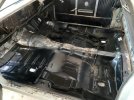jelco
Promoted Users
I need to replace the floor pan of my 64 El Camino. Seems like a daunting task but I’m going to give it a try. I bought a Blair spot weld cutter and buying full left and right halves of the floor pan. It also looks like the rear vertical panel may need to be replaced, or patch it.
I was reading this other post about seam sealer but confused about a few things.
Is 2k seam sealer worth the investment?
Don’t you want to seal from above and below?



I was reading this other post about seam sealer but confused about a few things.
which seam sealer??? HELP
I have a 67 Chevelle I am working on. Lots of new metal. Currently I am about ready to epoxy the underside of the floor and trunk pan as well as the wheel tubs. I plan to shoot SPI epoxy, seam seal, then shoot Upol Raptor Liner over it all. My question is which seam sealer should I use? 1K...
www.spiuserforum.com
Don’t you want to seal from above and below?
Last edited:




